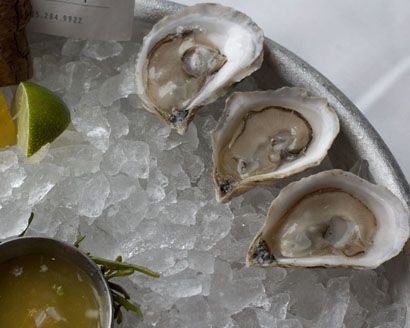Everything You Need To Know About Oysters
While serving raw oysters at your next dinner party might seem a bit sketchy, the chefs over at Waterbar assure us that there's nothing scary about oysters at all.
Parke Ulrich and Greg Babinecz at Waterbar share their best oyster-serving tips, from how to buy them to how to serve them. Babinecz recommends finding an oyster producer you can trust, "some place with a high turnover, like a fresh fish market that's not keeping them in-house for too long," he says. "Someone you can really just talk to, ask what's freshest." And if local stores aren't an option, Ulrich says plenty of oyster farms now sell their oysters online.
"A lot of farmers nowadays have methods where they're growing oysters at their best all year round," Ulrich says, "During certain times of the year their fat levels are different and that's just a preference for people."
Oysters grown in colder water tend to have a cleaner, brinier taste, so Ulrich and Babinecz suggest serving them like wines, from the lightest to the heaviest.
"You have five species, which is a very big thing," Babinecz says. "In an ideal progression, I like to start with a nice crisp East Coast oyster, move to a bit more briny West Coast oyster, then probably move into a nice creamy Kumamoto, and finish with the Olympias and the European Flat oysters, since they'll have stronger flavors. They're heavy on copper flavors."
As for shucking them? Well, that's another story altogether.
